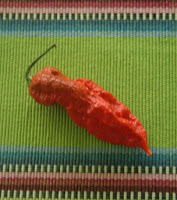 One of the fun things about being a writer, and a gardener, is getting to hang out with other gardeners and writers. Our trip this week to Portland, Albany and Corvallis, Oregon, for the annual (and 60th anniversary) of the Garden Writers of America convention illustrates what I mean. Not only did we hang out, we ate out, ate in, cooked, smoozed, cooked and ate some more, all before even getting to the convention! And we visited lots of gardens, as well.
One of the fun things about being a writer, and a gardener, is getting to hang out with other gardeners and writers. Our trip this week to Portland, Albany and Corvallis, Oregon, for the annual (and 60th anniversary) of the Garden Writers of America convention illustrates what I mean. Not only did we hang out, we ate out, ate in, cooked, smoozed, cooked and ate some more, all before even getting to the convention! And we visited lots of gardens, as well.Long time friends, and
 wholesale customers, Keane and Rose Marie Nichols McGee were our hosts for the pre-conference touring. Their business, Nichols Garden Seed (which you will find listed on our website under the "Looking for Plants & Seed?" button and their blog is listed on my blog list on this page) specializes in herbs and unusual and heirloom vegetables. Rose Marie is the author of The Container Garden, among others, so I posed her with her book. If you're interested in gardening in containers on the patio or deck, this is an excellent resource for you. Their garage apartment was our home base for a couple of days before the conference.
wholesale customers, Keane and Rose Marie Nichols McGee were our hosts for the pre-conference touring. Their business, Nichols Garden Seed (which you will find listed on our website under the "Looking for Plants & Seed?" button and their blog is listed on my blog list on this page) specializes in herbs and unusual and heirloom vegetables. Rose Marie is the author of The Container Garden, among others, so I posed her with her book. If you're interested in gardening in containers on the patio or deck, this is an excellent resource for you. Their garage apartment was our home base for a couple of days before the conference.Cathy Barash, author of Edible Flowers and other books, was being hosted by the McGees in their home, as well. Rosalind Creasy, author of a whole bunch of books including The Edible Landscape, photographer for lots of beautiful garden calendars and books, was there visiting,
 so they both got posed by me with one of their books.
so they both got posed by me with one of their books.Chef Eddie Chong, who you may recall came from Malaysia and stayed part of the summer with us here at Long Creek Herbs 3 years, flew up from his home in San Francisco. Chef Eddie is making a name for himself in the cooking wilderness of San Francisco. He organized a pot luck, which you may recognize takes guts considering everyone except the McGees had traveled half way across the country to be there. We were 14 people in all, including Betty who maintains the catalogs for Nichols Gardens, garden columnist Nancy Sczerlag, from Detroit (as I recall), Gregg, Chef Eddie's friend and on-line entrepreneur from San Fran, David McGee, who, like me, had a kidney transplant a couple of years ago and is doing fine.
Under Chef Eddie's encouragement, we "shopped" for vegetables in the All American Award Winning demonstration gardens at Nichols Garden Seed Co., then cooked and cooked. Imagine, a housefull of cookbook authors, with all the food they want to play with and an evening with Oregon wines and the cheering of everyone not cooking. A feast was enjoyed by all.
 Josh and I arrived home late Tuesday night, I unpacked and repacked and am heading to Asheville, NC tomorrow for a friend's wedding. Hopefully, I'll find some interesting plants and farmer's markets along the way. It will be hard to top
Josh and I arrived home late Tuesday night, I unpacked and repacked and am heading to Asheville, NC tomorrow for a friend's wedding. Hopefully, I'll find some interesting plants and farmer's markets along the way. It will be hard to top visiting Oregon, however, which is a gardener's paradise. Just about everything grows there and it is one of my favorite places to visit.
visiting Oregon, however, which is a gardener's paradise. Just about everything grows there and it is one of my favorite places to visit.










